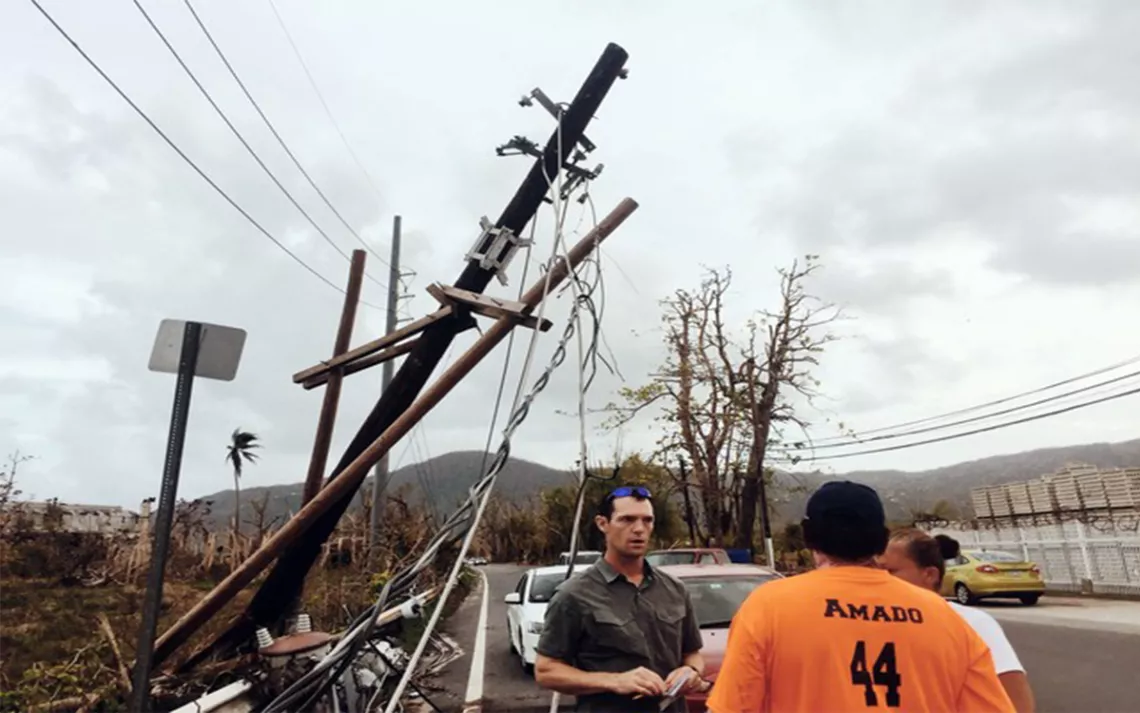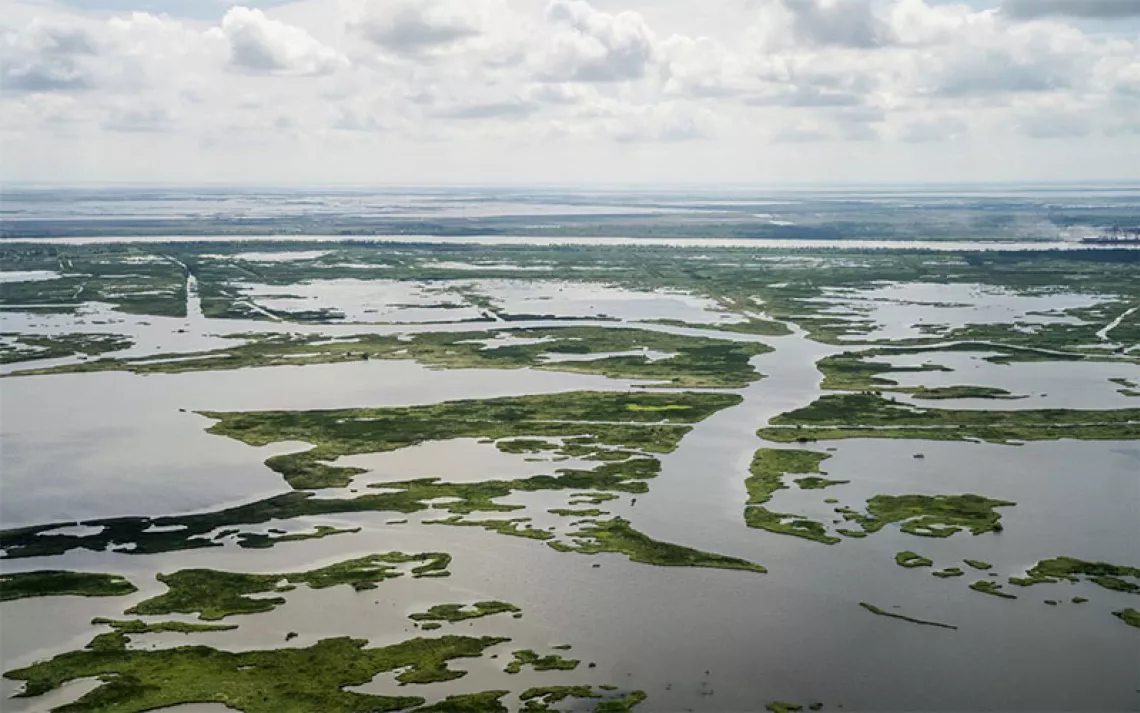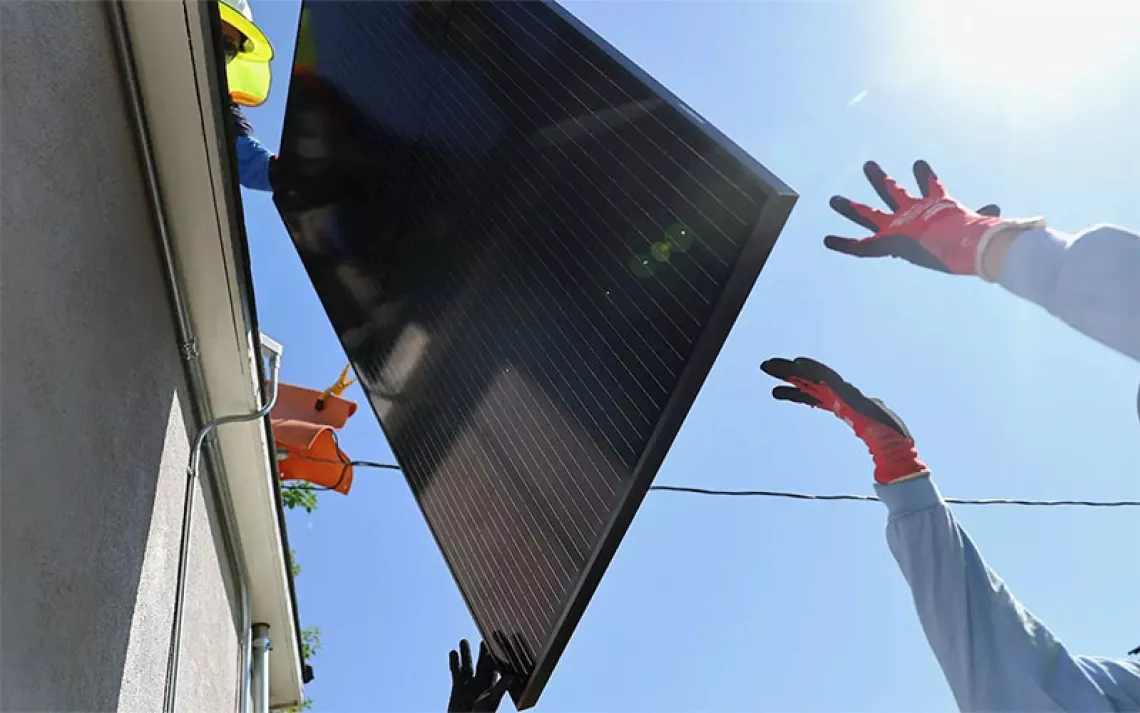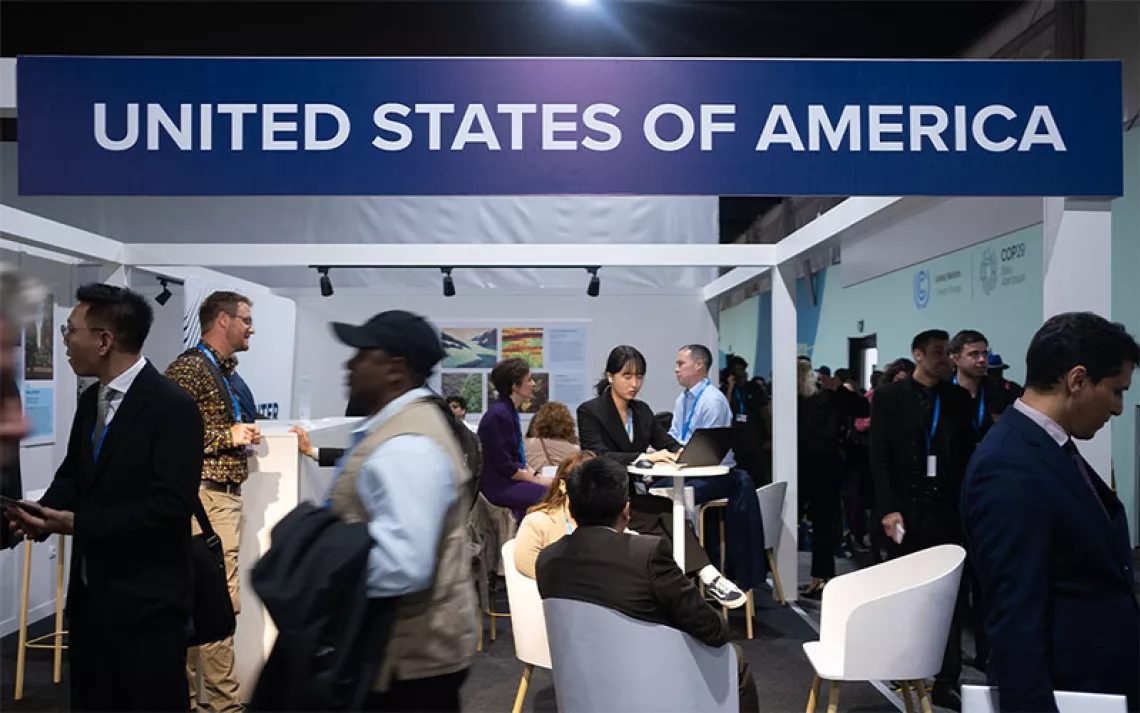Post-Apocalyptic Puerto Rico
The worst blackout in American history isn’t ending any time soon

Photo courtesy of Joa Rodríguez
David Ferris, a reporter for E&E News and past columnist for Sierra, recently returned from a reporting trip to Puerto Rico. He spoke to senior editor Paul Rauber about what he saw there.
Ferris: It's a little bit hard to understand the level of damage that Hurricane Maria did. It's totally standard to see, on any part of the island, power lines down, trees fallen. It seems like almost every tree on the entire island has lost its leaves, so what was once a verdant place is now brown and seemingly dead. It looks like something out of a post-apocalyptic movie. The damage was less in San Juan, because all of the buildings managed to blunt some of the damage. But out in the countryside, it's mind-boggling how much damage this storm did. You're driving along the road and power lines are hanging over, only prevented from falling on top of cars by the fact that they’re snagged in trees. Cars drive over power lines fallen in the road that still haven't been removed or touched. Landslides in the mountains block whole routes; you have big concrete bridges over major rivers that have been completely swept away. It's astonishing to see how much damage a storm can do, and that's apart from the deprivation that people are living in.
How is Puerto Rico’s population distributed?
The major population center is San Juan, which is on the north-central coast. But there are lots of small towns and lightly populated municipalities, as they call them, in the mountains. Aside from El Yunque rainforest, the island is pretty consistently populated throughout. That’s one of the reasons why FEMA has struggled to get supplies to people—there are so many places for the aid to go.
So here it is more than six weeks after the storm, and two-thirds of the island’s residents are still without power. How can that be?
That two-thirds figure is a bit misleading—it actually overstates how many people have power. The government figures are in terms of megawatts delivered now, compared to how many megawatts they were delivering before it started. A lot of big pieces of critical infrastructure like the airport, hospitals, and things like that have been repowered, and those tend to be pretty power hungry. What’s not represented in that number are most residents and most businesses. The great majority of businesses and residences in Puerto Rico still don’t have power.
How are people getting by?
I found Puerto Ricans to be pretty easygoing and relaxed in the face of their plight. If the power was out for this long on the mainland, people would be marching with pitchforks on city hall. Their tolerance has been impressive, and they've adapted in a lot of ways. Probably the majority of people are out of work. If you have an office job, the computers don't work and the air-conditioning is down; it's a very hot, tropical country, so being in any office becomes insufferable. If you have any job that has anything to do with electricity, you can't work. I was getting people's stories in this regard—for example, the basket-making shop where they couldn't operate their table saw and had to let their six employees go. Or the tattoo artist who couldn't run his tattoo needle because it needs electricity. Or the dentist in San Juan who had his diesel stolen so he can't run his backup generator, and now his two hygienists and his 20 patients a day have nowhere to go.
There are other examples you wouldn’t think of. For example, in order to deliver water, you need power to run the pumps. It's pretty common to see people lined up on the side of a road where someone stuck a PVC pipe into a waterfall and people are holding up their containers to grab it. When you have no electricity, it becomes a communication crisis. It becomes a water crisis. And you really understand how central electricity is to how we live.
Did the cancellation of the contract with Whitefish Energy set back the date for getting the power back on?
That process had been going very slowly anyway. PREPA [the Puerto Rico Electric Power Authority] has said that taking Whitefish out of the country will delay the return of power by 10 to 12 weeks. I don't know how legitimate that number is—I've never heard any projection less rosy than six months; six to 10 months seems to be the timeframe that most people are using. This is already the most severe blackout in U.S. history—the largest amount of power cut to the largest number of people. It's pretty epic.
PREPA seems to be a rather dysfunctional agency. How much of a factor is that in delaying the rebuilding?
I would assign it a lot of blame. Until three years ago, PREPA had absolutely no oversight and it had become very inefficient, with very sloppy record-keeping. It charges the highest rates for customers in the country outside of Hawaii and has the least reliable service of any utility in the country. And despite the fact that it had all that money, it didn't get around to replacing any of its power plants, so most of its power plants are over 40 years old and were at the end of their useful lives even before the storm hit. A lot of them are powered by oil and most have fallen out of compliance with EPA requirements for emissions. This storm found the electricity situation in Puerto Rico in a sorry state, and it’s mostly PREPA’s fault.
Given that the power plants were already outdated when the storm hit, it would seem like an ideal opportunity to do something new with Puerto Rico’s power system. Is that a possibility?
If you'd asked me that two weeks ago, I would have said no. The U.S. Army Corps of Engineers, which was tasked by the Trump administration with rebuilding the grid, said that they could only rebuild it exactly the way it was because that's all they were authorized to do.
Since then, people across the board from President Trump to Brock Long, the head of FEMA, to a lot of people on the ground are starting to talk about doing the grid in a new way. The problem is that there are a great many people who have an urgent demand for power right now, and rebuilding a grid in a new way is something that would take time. Right now it's unclear how that’s going to happen.
We've seen a lot of stories about Tesla's solar project. But it was limited to powering one hospital. Is there any possibility that it might expand its operations?
I've heard that conversations are happening, but one of the problems everyone is going to run into here is money. There is money available from the federal government to rebuild, but the utility itself, PREPA, is $8 billion in debt. So it’s not an exciting opportunity for investors right now to loan money to PREPA. Elon Musk has his heart in the right place, but he’s a businessman. I wonder how far Tesla's commitment is going to go if it isn’t getting paid.
 The Magazine of The Sierra Club
The Magazine of The Sierra Club



